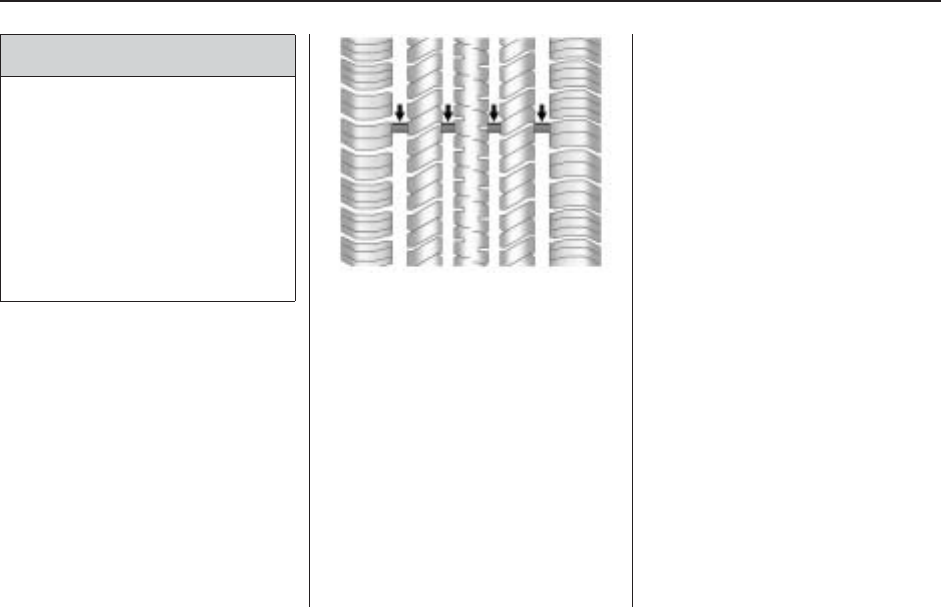
CAUTION (Continued)
When you change a wheel,
remove any rust or dirt from
places where the wheel attaches
to the vehicle. In an emergency,
you can use a cloth or a paper
towel to do this; but be sure to
use a scraper or wire brush later,
if needed, to get all the rust or dirt
off. See Changing a Flat Tire on
page 5-64.
When It Is Time for New
Tires
Various factors, such as
maintenance, temperatures, driving
speeds, vehicle loading, and
road conditions influence when
you need new tires.
One way to tell when it is time for
new tires is to check the treadwear
indicators, which will appear when
the tires have only 1/16 inch
(1.6 mm) or less of tread remaining.
You need new tires if any of the
following statements are true:
• You can see the indicators at
three or more places around
the tire.
• You can see cord or fabric
showing through the tire’s rubber.
• The tread or sidewall is cracked,
cut, or snagged deep enough to
show cord or fabric.
• The tire has a bump, bulge, or
split.
• The tire has a puncture, cut, or
other damage that cannot be
repaired well because of the size
or location of the damage.
The rubber in tires degrades over
time, even if they are not being
used. This is also true for the spare
tire, if the vehicle has one. Multiple
conditions affect how fast this
aging takes place, including
temperatures, loading conditions,
and inflation pressure maintenance.
With proper care and maintenance
tires typically wear out before
they degrade due to age. If you are
unsure about the need to replace
the tires as they get older, consult
the tire manufacturer for more
information.
Service and Appearance Care 5-57


















